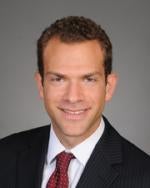The decision last fall in United States ex rel. Martin v. LifeCare Centers of America, Inc., No. 08-cv-251, 2014 WL 4816006 (E.D. Tenn. Sept. 29, 2014), has led to considerable discussion among lawyers who litigate claims arising under the False Claims Act (FCA). This decision represents the first time any court has found statistical sampling and extrapolation sufficient to establish FCA liability. Some courts had previously endorsed the use of sampling to demonstrate damages once liability has been established. Other courts had affirmed Department of Health and Human Services (HHS) administrative decisions that applied sampling in concluding that Medicare had overpaid government contractors. But the LifeCare decision went further, denying the defendant’s motion for summary judgment relating to the government’s use of statistical sampling to show falsity – the very essence of a false claim for payment by the government.
What is particularly noteworthy about the LifeCare decision is the nature of the government’s allegations for which the Court found extrapolation appropriate. In LifeCare, the government has alleged that LifeCare, a company that operates skilled nursing facilities, billed Medicare for medically unnecessary rehabilitation therapy services. A determination of medical necessity as to each of the services billed to Medicare turn on the individualized (and not collective) decisions of clinicians. The defendant argued that individualized decision-making cannot be demonstrated accurately through collective proof. Nevertheless, the court in LifeCare concluded that this argument “highlights the very nature of statistical sampling: that a smaller portion of claims will be used to draw an inference about a larger, not entirely identical, population of claims.” Some commentators have reacted to this reasoning by concluding that LifeCare gives the government and relators license to sidestep proof of falsity for each alleged claim for payment.
Another recent decision, United States v. AseraCare, Inc., No. 2:12-CV-245-KOB, 2014 U.S. Dist. LEXIS 167970 (N.D. Ala. Dec. 4, 2014), illustrates a similar conclusion. In that case, the court denied the defendant’s motion for summary judgment on the element of falsity where the government solely relied upon a sampling of claims reviewed by an expert. In its decision, the court concluded that statistical evidence was sufficient evidence of falsity to defeat summary judgment.
However, a close reading of both LifeCare and AseraCare demonstrates that these cases contain important limitations. First, the LifeCare court recognized that its decision was the first of its kind. Other courts are not bound to follow its reasoning. Second, both courts noted that plaintiffs seeking to use sampling would still be subject to Daubert challenges. Moreover, LifeCare does not stand for the proposition that a plaintiff can prove FCA elements other than falsity by virtue of presenting a valid sample. In opposing summary judgment, the government represented that it intended to establish scienter by evidence of “corporate practices and pressure, and that LifeCare knew those practices likely caused the submission of false claims given the complaints it received nationwide from its employees and others.” The court approved of the manner in which the government proposed to establish scienter, recognizing that “the Government . . . does not intend to use statistical sampling to prove this element of the FCA” (emphasis added). Interestingly, the government’s evidence as to the defendant’s knowledge that its practices “likely caused the submission of false claims” was not tested at summary judgment, as the court noted “the lack of evidence submitted by either party” and allowed the case to proceed to trial only because “the Court [was] not persuaded at this juncture that the Government will be completely unable to establish that Defendant had knowledge of the alleged false claims.”
This reasoning enlightens how defendants should attack claims based upon statistical extrapolation, because it reinforces important limitations of FCA liability, even if other courts were to follow LifeCare and AseraCare. In all FCA cases, plaintiffs must demonstrate scienter and causation in addition to falsity. Although LifeCare and AseraCare may endorse a shortcut to establishing falsity, they do not stand for the notion that plaintiffs may establish the remaining elements through a statistically valid sample alone.
Instead, where FCA plaintiffs rely on collective proof to establish scienter and causation, they must present evidence of a pattern or practice and that the defendant knew – or was reckless in not knowing – that this practice “likely caused the submission of false claims.” Without presenting evidence that a defendant was aware of (or recklessly disregarded) the fact that its practices were likely causing the submission of false claims, plaintiffs cannot proceed to trial. In short, even under LifeCare and AseraCare, a statistical sample alone is not enough to prevail.




 />i
/>i

